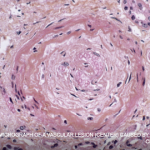“ANA’s are some of most commonly ordered tests but what exactly are they and what do you do with a positive ANA? Check out the Editor’s Pick for October to learn more,” says Physician Editor Bharat Kumar, MD, MME, FACP, FAAAAI, RhMSUS.


Donald Thomas, MD, FACP, FACR, RhMSUS, & Jason Liebowitz, MD |
“ANA’s are some of most commonly ordered tests but what exactly are they and what do you do with a positive ANA? Check out the Editor’s Pick for October to learn more,” says Physician Editor Bharat Kumar, MD, MME, FACP, FAAAAI, RhMSUS.
Staff |
The ACR’s Regional Advisory Council (RAC) has received several member reports of false results on antinuclear antibody (ANA) tests. The test screens for systemic lupus erythematosus, drug-induced lupus, and other diseases. Results are used to direct treatment, so accuracy is crucial.

Vineetha Philip, MD, MPH, Myriam Guevara, MD, Angelina Edwards, MD, & Ziad M. El-Zaatari, MD |
Kidney involvement is a major cause of morbidity and mortality in systemic lupus erythematosus (SLE). Collectively termed lupus nephritis, SLE with kidney involvement comes in many subtypes. The current classification by the International Society of Nephrology/Renal Pathology Society (ISN/RPS), however, does not include lupus podocytopathy, which, through various clinical and epidemiologic studies, has recently been…

Donald Thomas, MD, FACP, FACR, RhMSUS, & Jason Liebowitz, MD |
Think about it. Most rheumatology labs are stuck in the 1960s. Translational biomarker research looks excellent on paper and in theory. However, many barriers exist from the bench to the bedside. This article highlights this problem for the rheumatology community and proposes practical solutions. Case in Point For an example, let’s examine systemic lupus erythematosus…

Vania Lin, MD, MPH, Rebecca Johnson, MD, & Lisa Suter, MD |
Polyarteritis nodosa (PAN) is a necrotizing vasculitis, predominantly involving medium-sized arteries, that causes systemic disease, and, less commonly, cutaneous-limited disease. The population prevalence for PAN ranges from 2 to 33 per million.1-3 Estimates vary due to the increased recognition and classification of other forms of vasculitides over time and variation in the regional prevalence of…

No one-size-fits-all approach exists for the care and treatment of patients with systemic sclerosis (SSc) and SSc with pulmonary involvement. Here, experts discuss some best clinical practices for these patients.

Recent research suggests patients with RA and a positive test for anti-nuclear antibody (ANA) may not have a different disease course than patients with RA who test negative for ANA. However, these patients may experience different treatment courses.
Reuters Staff |
NEW YORK (Reuters Health)—New European League Against Rheumatism/American College of Rheumatology (EULAR/ACR) classification criteria can be used to identify patients with systemic lupus erythematosus (SLE) in an unselected group of patients hospitalized for pericardial effusion, new findings show.1 “Overall, in patients with pericardial effusion and positive ANA, the diagnosis of SLE could be ruled out…

Catherine Kolonko |
How laboratories define a serological hallmark of systemic lupus erythematous and which assays they use to detect it could contribute to misclassification of patients identified as anti-nuclear antibody (ANA) negative, according to researchers. Most people who have lupus test positive for ANAs as part of an immunology screening for autoimmune disorders. The presence of ANAs…

Wesam Gouda, MBBCh, MSc; Abdelhafeez Moshrif, MBBCh, MSc, MD; Fatma H. El Nouby, MBBCh, MSc, MD; & Amal Fehr, MBBCh, MSc, MD |
Systemic sclerosis (SSc) is a multi-system connective tissue disease in which skin and internal organ fibrosis are associated with an obliterative micro-vasculopathy and a degree of inflammation.1 Patients often report it takes one to three years from the appearance of the first signs and symptoms before they receive a diagnosis. The signs and symptoms of…